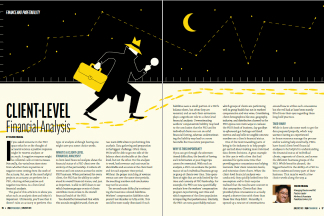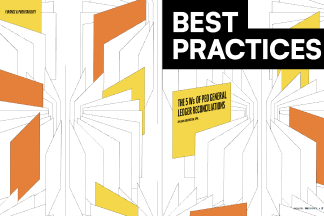ECONOMIC UPDATE AND THE RISE OF AI: WHAT PEOS NEED TO KNOW
November 2024


In today’s rapidly evolving economic landscape, small businesses face both challenges and opportunities. Recent economic indicators show a slowing expansion, but emerging technologies, particularly Artificial Intelligence (AI), promise a new era of growth and innovation. Let’s dive into the current economy and explore how AI is shaping the future of business.
ECONOMIC UPDATE: SLOWING BUT STILL GROWING
The U.S. economy continues to grow, albeit at a slower pace. Manufacturing activity has been in contraction territory for months, signaling a slowdown in production and potentially impacting supply chains. This contraction could lead to reduced demand for raw materials and components, affecting various sectors of the economy. Similarly, retail sales, when adjusted for inflation, have shown a decrease over the last year. This decline indicates that consumers are spending less in real terms, which could be due to factors such as increased prices, economic uncertainty, or changes in spending habits. For small businesses, especially those in the retail sector, this trend underscores the importance of adapting to changing consumer behaviors and finding ways to provide value in a challenging environment.
Consumer confidence has also notably declined, reflecting growing uncertainty about the economic outlook. When consumers are less confident, they tend to be cautious with their spending, which can have ripple effects throughout the economy. Small businesses may need to work harder to attract and retain customers during periods of low consumer confidence. The labor market, perhaps the most important economic indicator, shows signs of cooling as well, with private sector job growth downshifting in recent months. This trend suggests that employers are becoming more cautious about hiring, potentially in response to economic uncertainties or because of increased productivity through automation and technology adoption. For small businesses, this could mean a more competitive hiring landscape, but also potentially more available talent. All of this is critical for PEOs as small businesses are their core client base.
Despite these challenges, there are positive signs. Inflation is easing which could provide relief to businesses and consumers in terms of cost pressures. Additionally, the Federal Reserve recently cut interest rates by 50 basis points, and additional cuts are expected going forward, which could make borrowing more affordable for businesses looking to invest or expand. Another leading indicator is the stock market. Equities in the tech sector remain strong, signaling optimism about the economy’s ability to weather near-term turbulence. This resilience in the stock market can be seen as a vote of confidence in the long-term prospects of the economy, despite current uncertainty-related headwinds.
THE AI REVOLUTION: A NEW ECONOMIC DRIVER
While the broader economy shows signs of slowing, the AI sector is still booming. Funding for generative AI has surged, reaching an impressive $25.2 billion in recent years. This substantial influx of capital demonstrates the high level of confidence investors have in AI’s potential to transform industries and create new economic opportunities. For small businesses, this trend signals the growing importance of AI and the potential for new AI-driven solutions to emerge that could benefit operations. The United States has established itself as a leader in AI innovation, creating over 5,500 AI companies in the past decade. This leadership position contributes to the country’s technological edge and creates a rich ecosystem of AI talent and resources. Small businesses in the U.S. may find themselves well-positioned to benefit from this innovation hub, with potential access to cutting-edge AI tools and expertise.
The most anticipated impact of the burgeoning AI revolution is a rapid and prolonged productivity boom. Moreover, AI is expected to significantly increase labor productivity, potentially leading to a 15% increase in U.S. GDP. This productivity enhancement could be a game-changer for businesses of all sizes. For small businesses, AI-driven productivity gains could mean doing more with less, allowing them to compete more effectively with larger corporations and expand their operations without proportional increases in costs. This could also free up more resources to focus on HR, benefiting PEOs.
More broadly, the AI revolution will have a wide-ranging impact, as AI is not limited to tech companies and is beginning to transform various industries. From healthcare to finance, retail to manufacturing, AI has applications in virtually every sector. This pervasive impact means that small businesses in any industry can benefit from AI adoption, whether it’s through improved customer service, more efficient operations, or data-driven decision-making. This creates the opportunity for rapid new business formation, another boon for PEOs looking for new clients.
WHAT AI MEANS FOR SMALL BUSINESSES AND PEOS
The rise of AI presents both opportunities and challenges for small businesses. One clear opportunity is AI is leveling the playing field with larger corporations by providing small businesses access to sophisticated tools and insights previously available only to those with substantial resources. With cloud-based AI solutions, even small companies can now leverage advanced analytics, automate complex tasks and gain valuable insights from their data. Moreover, access to advanced analytics and insights allows small businesses to make more informed decisions. AI can help in analyzing market trends, customer behavior, and operational efficiency, enabling small businesses to compete more effectively and identify new opportunities for growth.
Automation of routine tasks through AI frees up valuable time and resources. Small business owners and employees can focus on core competencies and strategic initiatives rather than getting bogged down in repetitive, time-consuming tasks. This can lead to increased productivity and higher job satisfaction as employees engage in more meaningful work. Enhanced customer experiences through personalization are now within reach for small businesses. AI-powered tools can help create tailored experiences for customers, from personalized product recommendations to customized marketing messages. This level of personalization can significantly improve customer satisfaction and loyalty, helping small businesses build stronger relationships with their client base.
As for challenges, limited resources for AI adoption can be a significant hurdle for small businesses. The initial investment in AI technology and the expertise required to implement it effectively can be daunting for companies with tight budgets. Lack of technical expertise is another common challenge. Many small businesses may not have in-house IT teams or employees with the necessary skills to implement and manage AI systems effectively. Similarly, data privacy and security concerns are paramount when dealing with AI, which often requires access to large amounts of data. Small businesses need to ensure they have robust systems in place to protect sensitive information and comply with data protection regulations. Finally, integration with existing systems can be complex. Many small businesses have legacy systems or established processes that may not be immediately compatible with new AI technologies. Ensuring smooth integration without disrupting day-to-day operations can be a significant challenge.
STEPS BUSINESSES CAN TAKE TODAY
Start Small: Begin with small AI projects and scale gradually. This approach allows businesses to test the waters without overwhelming their resources. A small retailer might start by implementing an AI-powered chatbot for customer service before moving on to more complex applications like inventory management or demand forecasting.
Leverage Cloud Solutions: Use cloud-based AI tools to reduce initial investment. Many AI services are now available on a subscription basis, allowing small businesses to access powerful capabilities without the need for substantial upfront costs or in-house infrastructure.
Invest in Training: Upskill your workforce to handle AI technologies. This investment in human capital can pay dividends as employees become more proficient in using AI tools and can apply them more effectively to business challenges. Consider online courses, workshops, or partnering with local educational institutions to provide AI training.
Develop a Strategy: Create an AI adoption roadmap tailored to your business needs. This strategic approach ensures that AI initiatives align with overall business goals and are implemented in a systematic, prioritized manner. Consider both short-term wins and long-term transformational projects in your roadmap.
THE ROLE OF PEOS
PEOs have a proven track record of helping small businesses adapt to significant changes, from healthcare reform to pandemic-related challenges. As AI transforms the business landscape, PEOs are uniquely positioned to assist small businesses in navigating this technological revolution. They can provide guidance on AI-related HR practices, help with training and development programs focused on AI skills, and offer insights into how AI can enhance various aspects of workforce management.
While economic indicators suggest a slowdown, the rise of AI presents a significant opportunity for growth and innovation. Small businesses that embrace AI early stand to gain a competitive advantage, whereas late adopters may risk obsolescence. The time to start your AI journey is now – don’t be left behind in this technological revolution. Remember, change can happen fast or gradually, but being prepared is key. By taking steps today to incorporate AI into your business strategy, you’re investing in your company’s future success.
As for PEOs, they face a unique opportunity to help small businesses navigate the ongoing paradigm shift, which will only strengthen client relationships going forward.
-
SHARE
- Copy to clipboard




